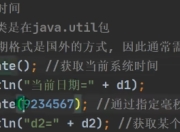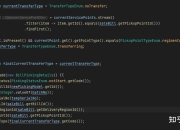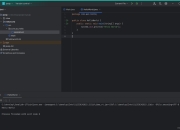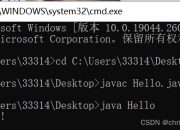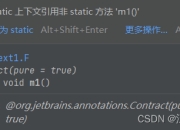在当今数据驱动的时代,处理二进制大对象(Blob)已成为Java开发中的常见需求。本文将全面解析Java Blob技术,带您从基础概念到高级应用,掌握这一关键技术。
一、Java Blob基础概念
Blob(Binary Large Object)是数据库中用于存储大量二进制数据的对象类型。在Java中,我们通过java.sql.Blob接口与这些数据进行交互。Blob通常用于存储图像、音频、视频、PDF文档等非结构化数据。
与普通数据类型相比,Blob具有几个显著特点:
1. 存储容量大,通常可达GB级别
2. 以二进制流形式处理数据
3. 支持分段读取和写入
4. 数据库有专门的优化机制
二、Java Blob核心操作
1. 创建Blob对象
在JDBC中,我们可以通过多种方式创建Blob对象:

// 使用Connection.createBlob()方法
Connection conn = DriverManager.getConnection(url, user, password);
Blob blob = conn.createBlob();
// 通过PreparedStatement设置参数
PreparedStatement pstmt = conn.prepareStatement("INSERT INTO files VALUES(?,?)");
File file = new File("example.pdf");
FileInputStream fis = new FileInputStream(file);
pstmt.setString(1, file.getName());
pstmt.setBlob(2, fis);
2. 写入Blob数据
写入Blob数据有多种方式,以下是常见方法:
// 方法1:直接设置二进制流
blob.setBytes(1, byteArray);
// 方法2:使用输出流
OutputStream os = blob.setBinaryStream(1);
os.write(byteArray);
os.close();
// 方法3:分段写入
int offset = 0;
int chunkSize = 4096;
while(offset < byteArray.length) {
int length = Math.min(chunkSize, byteArray.length - offset);
blob.setBytes(offset + 1, byteArray, offset, length);
offset += length;
}
3. 读取Blob数据
读取Blob同样有多种方式:
// 方法1:读取全部字节
byte[] allBytes = blob.getBytes(1, (int)blob.length());
// 方法2:使用输入流
InputStream is = blob.getBinaryStream();
ByteArrayOutputStream baos = new ByteArrayOutputStream();
byte[] buffer = new byte[1024];
int bytesRead;
while((bytesRead = is.read(buffer)) != -1) {
baos.write(buffer, 0, bytesRead);
}
byte[] data = baos.toByteArray();
// 方法3:分段读取
long blobLength = blob.length();
byte[] partialData = new byte[chunkSize];
blob.getBytes(startPosition, partialData, 0, chunkSize);
三、高级应用技巧
1. 性能优化策略
处理大型Blob时,性能至关重要:
- 使用流式处理:避免将整个Blob加载到内存
- 设置合适的缓冲区大小:通常4KB-32KB效果最佳
- 考虑分块处理:对大文件进行分段读写
- 利用数据库特性:如Oracle的临时LOB
2. 事务处理注意事项
Blob操作需要注意事务边界:
try {
conn.setAutoCommit(false);
// Blob操作代码
conn.commit();
} catch(SQLException e) {
conn.rollback();
} finally {
conn.setAutoCommit(true);
}
3. 跨数据库兼容性
不同数据库对Blob的实现有差异:
| 数据库 | Blob最大大小 | 特殊考虑 |
|---|---|---|
| MySQL | 4GB(LONGBLOB) | 需要配置max_allowed_packet |
| Oracle | 128TB | 使用BLOB或BFILE类型 |
| SQL Server | 2GB | 使用VARBINARY(MAX) |
| PostgreSQL | 1GB | 需要大对象特殊处理 |
四、实战案例
案例1:图片存储与检索系统
// 存储图片
public void storeImage(Connection conn, String name, byte[] imageData) throws SQLException {
String sql = "INSERT INTO images(name, data) VALUES(?, ?)";
try(PreparedStatement pstmt = conn.prepareStatement(sql)) {
pstmt.setString(1, name);
pstmt.setBytes(2, imageData);
pstmt.executeUpdate();
}
}
// 检索图片
public byte[] retrieveImage(Connection conn, String name) throws SQLException {
String sql = "SELECT data FROM images WHERE name = ?";
try(PreparedStatement pstmt = conn.prepareStatement(sql)) {
pstmt.setString(1, name);
try(ResultSet rs = pstmt.executeQuery()) {
if(rs.next()) {
return rs.getBytes("data");
}
}
}
return null;
}
案例2:PDF文档管理系统
// 上传PDF文档
public void uploadPdf(Connection conn, File pdfFile) throws SQLException, IOException {
String sql = "INSERT INTO documents(file_name, content, upload_date) VALUES(?, ?, ?)";
try(PreparedStatement pstmt = conn.prepareStatement(sql);
FileInputStream fis = new FileInputStream(pdfFile)) {
pstmt.setString(1, pdfFile.getName());
pstmt.setBlob(2, fis);
pstmt.setDate(3, new java.sql.Date(System.currentTimeMillis()));
pstmt.executeUpdate();
}
}
// 下载PDF文档
public void downloadPdf(Connection conn, int docId, OutputStream out) throws SQLException, IOException {
String sql = "SELECT content FROM documents WHERE id = ?";
try(PreparedStatement pstmt = conn.prepareStatement(sql)) {
pstmt.setInt(1, docId);
try(ResultSet rs = pstmt.executeQuery()) {
if(rs.next()) {
try(InputStream is = rs.getBinaryStream("content")) {
byte[] buffer = new byte[4096];
int bytesRead;
while((bytesRead = is.read(buffer)) != -1) {
out.write(buffer, 0, bytesRead);
}
}
}
}
}
}
五、常见问题与解决方案
问题1:内存溢出
症状:处理大文件时出现OutOfMemoryError
解决方案:
- 使用流式处理代替全量加载
- 增加JVM堆内存(-Xmx参数)
- 考虑分块处理策略

问题2:性能瓶颈
症状:Blob操作耗时过长
解决方案:
- 优化缓冲区大小
- 检查数据库配置(如Oracle的LOB缓存)
- 考虑异步处理
问题3:事务超时
症状:长时间Blob操作导致事务超时
解决方案:
- 调整事务超时设置
- 将大操作分解为小事务
- 考虑使用非事务性操作
六、未来发展趋势
随着数据量的持续增长,Java Blob技术也在不断演进:

- 云存储集成:更多开发者将Blob与云存储(S3等)结合使用
- 流式处理增强:JDBC规范对大型对象处理持续优化
- NoSQL支持:非关系型数据库中的Blob处理标准化
- 性能监控工具:专门的Blob操作性能分析工具出现
版权声明
本文仅代表作者观点,不代表百度立场。
本文系作者授权百度百家发表,未经许可,不得转载。



